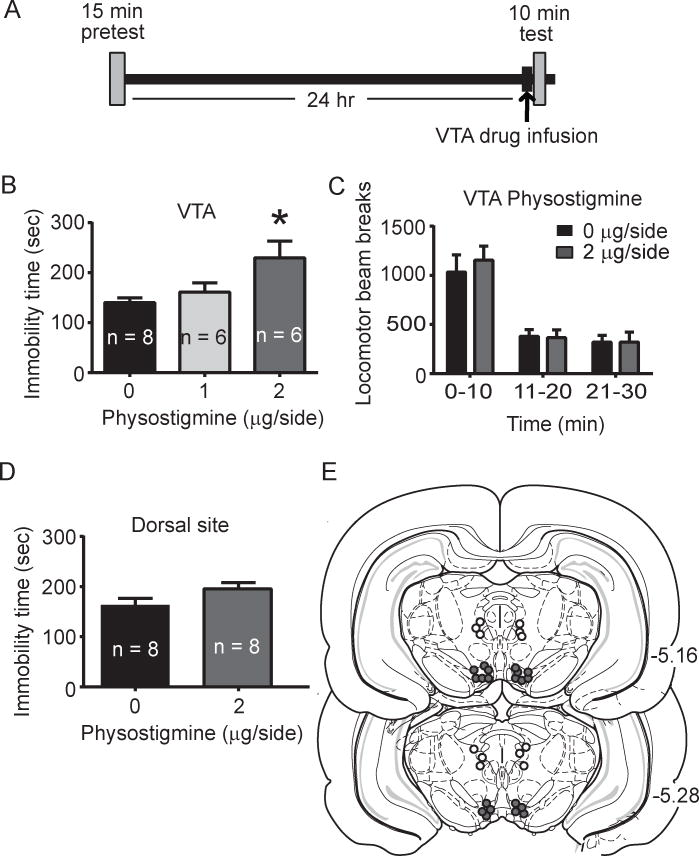Fig. 2.
Brain-region specific physostigmine infusion: effects on immobility time in the FST and total locomotor activity. A. Experimental timeline for the FST experiment. Intra-VTA drug infusion was performed immediately prior to the 10 min FST test session. B. Administration of physostigmine increased immobility time in FST (p < 0.05, main effect of drug; p < 0.05, Tukey post-hoc for 2 μg/side physostigmine versus saline). C. Intra-VTA drug infusion did not significantly affect locomotor activity, as measured by photobeam breaks (p > 0.05, two-way repeated measured ANOVA). D. Immobility time in the FST following physostigmine infusion into a site 2 mm dorsal to the VTA. Administration of 2 μg/side physostigmine did not alter immobility time in the FST (p > 0.05, independent samples t-test). E. Histological verification of intra-cranial cannula placements. Filled circles indicate representative placements for intra-VTA infusions and open circles indicate representative placements for dorsal control infusions.

